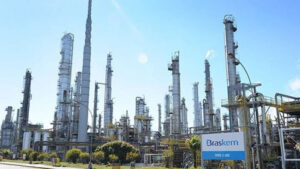
(Reuters, 6.Jan.2022) — Most of Argentina’s agricultural region will be hit in the coming days by a heatwave accompanied by little or no rainfall, adding pressure to adverse conditions that its corn and soybean crops have suffered for weeks, the Buenos Aires Grains Exchange said on Thursday.
Argentina is the world’s second largest corn exporter after the United States and the main global supplier of soybean oil and flour. The exchange estimated a record harvest of 57 million tons of soybeans and a production of 44 million tons of oil seed.
Since mid-December, a large part of the country’s main agricultural areas have experienced dry conditions, while temperatures have soared with arrival of the southern hemisphere summer, cutting yields and causing fears of more losses.
In the next few days, “a prolonged and intense heatwave will begin, which will affect most of the agricultural area. Rainfall will remain low to zero in most of the agricultural area,” the exchange warned in its weekly agroclimatic report.
A wide area with maximum temperatures close to 40° C (104°F)will cover the agricultural heart of the country, added the report.
The extreme weather is hitting at a time when early-sown 21/22 corn is in key stages of development and defining yields. On Tuesday, the exchange’s head agronomist warned that due to the dry weather, they might have to cut their harvest estimate later.
According to the State and Condition of crops report published on Thursday, the percentage of corn plants in good-to-excellent condition fell to 40% from 58% last week, while the lots in fair-to-bad condition rose to 21% from 8% the week before.
The report said that dry conditions accompanying the high temperatures could generate losses in the 2021/22 soybean area, whose sowing was 86.8% complete as of last week. The planting of corn was 77.3% complete.
Little relief is in sight until the end of next week, when a cold front that would produce moderate to abundant rain between 10 and 50 millimeters (0.4-2 inches) is expected in most of the Argentine agricultural nucleus, accompanied by a moderate decline in temperature, the exchange said.
Currently, the La Niña weather phenomenon is hitting the main agricultural regions of Argentina and generating a reduction in the regular level of rainfall. However, until mid-December, the second half had seen regular rates of rainfall.
____________________
Reporting by Maximilian Heath; Writing by Carolina Pulice; Editing by David Gregorio and Marguerita Choy

